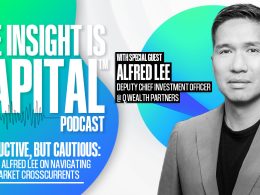by Brad McMillan, CIO, Commonwealth Financial Network
After Monday’s terrible performance—with U.S. stock markets down more than 2 percent—worries are starting to rise. Combined with last week’s declines, it looks like we may be seeing the end of the bull market. So, is it time to panic?
In a word, no. This is normal volatility, and there is no reason to panic. It is, however, time to take a deeper look to understand what is happening. The best way to do so is to step back and get some perspective on the situation.
A good place to be?
The market is now down by a bit under 5 percent from the peak, which takes it back to the levels of late March (about six weeks ago). This decline is not good, of course. But it still leaves us up more than 12 percent for the year—a good place to be. Despite the drop, the market is also still above its trend line, the 200-day moving average, which is where I personally start to pay attention. Overall, then, the market is in a good place.
The economy is also in a good place, which should continue to support the markets. Although we had a run of weak data, things have improved. When the economy is solid, market pullbacks tend to be short, although they can be quite sharp. So, despite the volatility, conditions are still favorable.
What’s driving the pullback?
If conditions are good, then what is driving the pullback? In a word, confidence. The recent resumption of the trade war between the U.S. and China has rattled business and investor confidence. Because of that uncertainty, even though the fundamentals remain sound, the price investors are willing to pay for those sound fundamentals has dropped. Confidence is now driving the markets. This dynamic means things could get worse as the rhetoric continues to dial up. In fact, it is quite possible that they will.
Confidence-driven pullbacks can lead to sudden drops. But they can reverse quite quickly. We have seen this story play out already, in the past six months, when stocks dropped toward the end of last year only to rebound to new highs this year. As long as the fundamentals remain sound (which they are), confidence-driven pullbacks also tend to end fairly quickly. We have seen this several times during this recovery, and this time is likely to be no different.
Is this normal?
As I’ve said before, what we are seeing in the markets is normal—and even to be expected after the great start we have had this year. It is also a completely rational adjustment to the potential impact of the trade war on future growth. In the bigger picture, it is also completely normal, with more than half of all years showing declines worse than what we have right now. Remember, we saw bigger declines at the end of last year, only to see a rebound.
So far, so normal. The time to start paying attention will be if the market cracks its 200-day moving average, which for the S&P 500 is now 2,776. Even if it does, however, it is not the end of the world. But it could mean the trend is at risk of changing, which could result in even more volatility. Even there, though, the likelihood is that the market recovers and resumes its upward climb.
So, should we ignore recent volatility?
It’s hard to do, but for most people, the answer to this question is yes. Are you taking more risk than you are comfortable with? If so, discuss it with your advisor. Not because the market is down, but because you need a portfolio you can live with through difficult times. We are likely not looking at a bear market now. But one will certainly be along at some point—and you need to be prepared.
Big picture? If you are very worried, take a closer look at the risks in your portfolio and make adjustments. If not, sit tight. As always, keep calm and carry on.
*****
Brad McMillan is the chief investment officer at Commonwealth Financial Network, the nation's largest privately held independent broker/dealer-RIA. He is the primary spokesperson for Commonwealth's investment divisions. This post originally appeared on The Independent Market Observer, a daily blog authored by Brad McMillan.
Forward-looking statements are based on our reasonable expectations and are not guaranteed. Diversification does not assure a profit or protect against loss in declining markets. There is no guarantee that any objective or goal will be achieved. All indices are unmanaged and investors cannot actually invest directly into an index. Unlike investments, indices do not incur management fees, charges, or expenses. Past performance is not indicative of future results.
Commonwealth Financial Network is the nation's largest privately held independent broker/dealer-RIA. This post originally appeared on Commonwealth Independent Advisor, the firm's corporate blog.
Copyright © Commonwealth Financial Network















